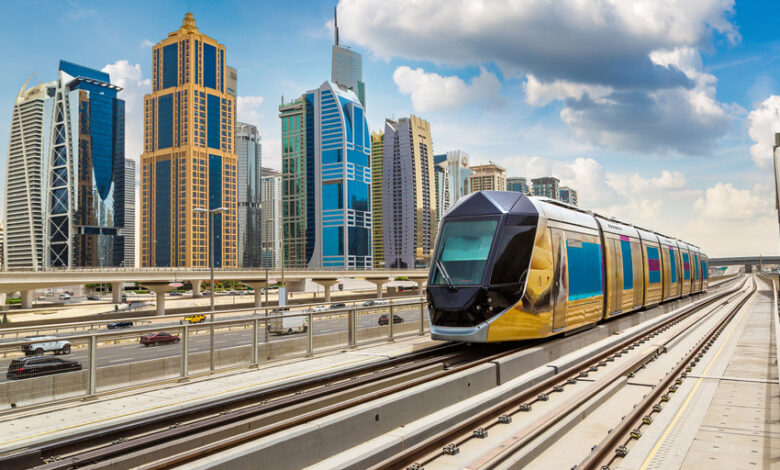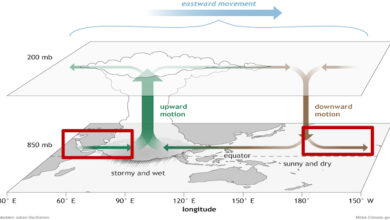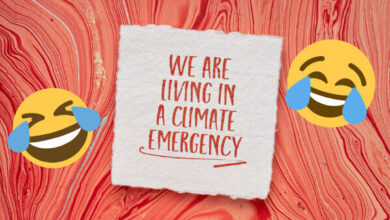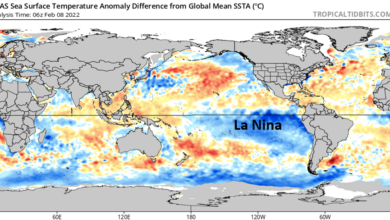A ‘Plan B’ for Addressing Climate Change and the Energy transition – Watts Up With That?

Reposted from Dr. Judith Curry’s Climate Etc.
Posted on March 17, 2022 by curryja |
by Judith Curry
I have a new article published in the latest issue of International Affairs Forum.
The topic of this issue is Climate Change and Energy. Mine is one of twenty papers. A range of topics are covered. My article is the least alarmed among them. You may recognize several of the authors, which include Don Wuebbles and Bill McKibben.
Here is the text of my article:
A ‘Plan B’ for addressing climate change and the energy transition
Climate change is increasingly being referred to as a crisis, emergency, existential threat and most recently as ‘code red.’ Climate change has become a grand narrative in which manmade global warming is regarded as the dominant cause of societal problems. Everything that goes wrong reinforces the conviction that that there is only one thing we can do prevent societal problems – stop burning fossil fuels. This grand narrative leads us to think that if we urgently stop burning fossil fuels, then these other problems would also be solved. This sense of urgency narrows the viewpoints and policy options that we are willing to consider in dealing not only with our energy and transportation systems, but also regarding complex issues such as public health, water resources, weather disasters and national security.
So, exactly what is wrong with this grand narrative of climate change? In a nutshell, we’ve vastly oversimplified both the problem of climate change and its solutions. The complexity, uncertainty, and ambiguity of the existing knowledge about climate change is being kept away from the policy and public debates. The dangers of manmade climate change have been confounded with natural weather and climate variability. The solutions that have been proposed for rapidly eliminating fossil fuels are technologically and politically infeasible on a global scale.
How did we come to the point where we’re alleged to have a future crisis on our hands, but the primary solution of rapid global emissions reductions is deemed to be all but impossible? The source of this conundrum is that we have mischaracterized climate change as a tame problem, with a simple solution. Climate change is better characterized as a wicked mess. A wicked problem is complex with dimensions that are difficult to define and changing with time. A mess is characterized by resistance to change and contradictory and suboptimal solutions that create additional problems. Treating a wicked mess as if it is a tame problem can result in a situation where the cure is not only ineffective, but worse than the alleged disease.
Specifically with regards to climate science, there is some good news. Recent analyses from the International Panel on Climate Change (IPCC) and the International Energy Agency (IEA) indicate that the extreme tail risks from global warming, associated with very high emissions and high climate sensitivity, have shrunk and are now regarded as unlikely if not implausible.
Further, the IPCC’s climate projections neglect plausible scenarios of natural climate variability, which are acknowledged to dominate regional climate variability on interannual to multidecadal time scales. Apart from the relative importance of natural climate variability, emissions reductions will do little to improve the climate of the 21st century – if you believe the climate models, most of the impacts of emissions reductions will be felt in the 22nd century and beyond.
How urgent is the need for an energy transition?
Under the auspices of the UN Framework Convention on Climate Change, the world is attempting to reach Netzero in carbon emissions by 2050. I refer to this as Plan A. Using the precautionary principle, Plan A is based on the premise that rapidly reducing CO2 emissions is critical for preventing future dangerous warming of the climate.
In spite of the numerous UN treaties and agreements to reduce emissions over the past two decades, the atmospheric CO2 concentration relentlessly continues to increase. By 2050, global emissions will be dominated by whatever China and India have done, or have failed to do. The IEA Roadmap to Netzero finds that there is a possible but very narrow pathway to Netzero by 2050, provided that there is a huge leap in energy innovation and major efforts to build new infrastructure. Others find reaching Netzero by 2050 to be a social and technological impossibility.
Terms such as ‘climate crisis’ and ‘code red for humanity’ are used by politicians and policy makers to emphasize the urgency of action to stop burning fossil fuels. Note that the IPCC itself does not use the words ‘crisis’, ‘catastrophe’, or even ‘dangerous’; rather it uses the term ‘reasons for concern.’ Apart from the scientific uncertainties, the weakest part of the UN’s argument about manmade global warming is that it is dangerous. The highest profile link to danger relies on linking warming to worsening extreme weather events, which is a tenuous link at best.
Any evaluation of dangerous climate change must confront the Goldilocks principle. Exactly which climate state is too hot versus too cold? Some answer this question by stating that the climate we are adapted to is ‘just right’. However, the IPCC uses a preindustrial baseline, in the late 1700’s. Why anyone thinks that this is an ideal climate is not obvious. This was during the Little Ice Age, the coldest period of the millennia. In the U.S., the states with by far the largest population growth are Florida and Texas, which are warm, southern states. Property along the coast – with its vulnerability to sea level rise and hurricanes – is skyrocketing in value. Personal preference and market value do not yet regard global warming as dangerous. While politicians in developed countries argue that we need to address climate change for the sake developing countries, addressing climate change ranks much lower in these countries than developing access to grid electricity.
The planet has been warming for more than a century. So far, the world has done a decent job at adapting to this change. The yields for many crops have doubled or even quadruped since 1960. Over the past century, the number of deaths per million people from weather and climate catastrophes have dropped by 97%. Losses from global weather disasters as a percent of GDP have declined over the past 30 years.
In addressing the challenges of climate change and the energy transition, we need to remind ourselves that addressing climate change isn’t an end in itself, and that climate change is not the only problem that the world is facing. The objective should be to improve human well-being in the 21st century, while protecting the environment as much as we can.
All other things being equal, everyone would prefer clean over dirty energy. However, all other things are not equal. We need secure, reliable, and economic energy systems for all countries in the world. This includes Africa, which is currently lacking grid electricity in many countries. We need a 21st century infrastructure for our electricity and transportation systems, to support continued and growing prosperity. The urgency of rushing to implement 20th century renewable technologies risks wasting resources on an inadequate energy infrastructure, increasing our vulnerability to weather and climate extremes and harming our environment in new ways.
How the climate of the 21st century will play out is a topic of deep uncertainty. Once natural climate variability is accounted for, it may turn out to be relatively benign. Or we may be faced with unanticipated surprises. We need to increase our resiliency to whatever the future climate presents us with. We are shooting ourselves in the foot if we sacrifice economic prosperity and overall societal resilience on the altar of urgently transitioning to 20th century renewable energy technologies. Alarmism about climate change misleads us and panic makes us less likely to tackle climate change smartly.
Towards a ‘Plan B’
Even without the mandate associated with global warming and other environmental issues, we would expect a natural transition away from fossil fuels over the course of the 21st century, as they become more expensive to extract and continue to contribute to geopolitical instability.
The problem is with the urgency of transitioning away from fossil fuels, driven by fears about global warming. By rapidly transitioning to this so-called clean energy economy driven by renewables, we’re taking a big step backwards in human development and prosperity. Nations are coming to grips with their growing over dependence on wind and solar energy. Concerns about not meeting electricity needs this winter are resulting in a near term reliance on coal in Europe and Asia. And we ignore the environmental impacts of mining and toxic waste from solar panels and batteries, and the destruction of raptors by wind turbines and habitats by large-scale solar farms.
Opponents of Plan A reject the urgency of reducing emissions. They state that we stand to make the overall situation worse with the simplistic solution of urgently replacing fossil fuels with wind and solar, which will have a barely noticeable impact on the climate of the 21st century.
Opponents of Plan A argue that its best to focus on keeping economies strong and making sure that everyone has access to energy. And finally, the argument is made that there are other more pressing problems than climate change that need to be addressed with the available resources.
Does all this mean we should do nothing in the near term about climate change? No. But given the problems with Plan A, we clearly need a Plan B that broadens the climate policy envelope. By considering climate change as a wicked mess, climate change can be reframed as a predicament for actively reimagining human life. Such a narrative can expand our imaginative capacity and animate political action while managing social losses.
We should work to minimize our impact on the planet, which isn’t simple for a planet with 8 billion inhabitants. We should work to minimize air and water pollution. From time immemorial, humans have adapted to climate change. Whether or not we manage to drastically curtail our carbon dioxide emissions in the coming decades, we need to reduce our vulnerability to extreme weather and climate events.
Here’s a framework for how we can get to a Plan B. A more pragmatic approach to dealing with climate change drops the timelines and emissions targets, in favor of accelerating energy innovation. Whether or not we manage to drastically curtail our carbon dioxide emissions in the coming decades, we need to reduce our vulnerability to extreme weather and climate events.
To thrive in the 21st century, the world will need much more energy. Of course we prefer our energy to be clean, as well as cheap. To get there, we need new technologies. The most promising right now is small modular nuclear reactors. But there are also exciting advances in geothermal, hydrogen and others. And the technology landscape will look different ten years from now.
Developing countries don’t just want to survive, they want to thrive. We need much more electricity, not less. Going on an energy diet like we did in the 1970’s is off the table. We need more electricity to support innovation and thrivability in the 21st century. Consumption and growth will continue to increase throughout the 21st century. We need to accept this premise, and then figure out how we can manage this growth while protecting our environment.
In addressing the climate change problem, we need to remind ourselves that climate isn’t an end in itself, and that climate change isn’t the only problem that the world is facing. The objective should be to improve human wellbeing in the 21st century, while protecting the environment as much as we can. Climate-informed decision making that focuses on food, energy, water and ecosystems will support human wellbeing in the coming decades.
So what does a Plan B actually look like? Rather than top-down solutions mandated by the UN, Plan B focuses on local solutions that secure the common interest, thus avoiding political gridlock. In addition to reimagining 21st century electricity and transportation systems, progress can be made on a number of fronts related to land use, forest management, agriculture, water resource management, waste management, among many others. Human wellbeing will be improved as a result of these efforts, whether or not climate change turns out to be a huge problem and whether or not we manage to drastically reduce our emissions. Individual countries and states can serve as laboratories for solutions to their local environmental problems and climate-related risks.
Conclusions
It is an enormous challenge to minimize the environmental impact on the planet of 8 billion people. I have no question that human ingenuity is up to the task of better providing for the needs and wants of Earth’s human inhabitants, while supporting habitats and species diversity. But this issue is the major challenge for the next millennium. It is a complex challenge that extends well beyond understanding the Earth system and developing new technologies – it also includes governance and social values.
To make progress on this, we need to disabuse ourselves of the hubris that we can control the Earth’s climate and prevent extreme weather events. The urgency of transitioning from fossil fuels to wind and solar energy under the auspices of the UN agreements has sucked all the oxygen from the room. There’s no space left for imagining what our 21st century infrastructure could look like, with new technologies and greater resilience to extreme weather events, or even to deal with traditional environmental problems.
Humans do have the ability to solve future crises of this kind. However, they also have the capacity to make things much worse by oversimplifying complex environmental issues and politicizing the science, which can lead to maladaptation and poor policy choices. In 50 years time, we may be looking back on the UN climate policies, and this so-called green economy, as using chemotherapy to try to cure a head cold, all the while ignoring more serious diseases. In other words, the climate crisis narrative gets in the way of real solutions to our societal and environmental problems.
Climate change is just one of many potential threats facing our world today, a point made clear by the Covid-19 pandemic. Why should climate change be prioritized over other threats? There’s a wide range of threats that we could face in the 21st century: solar electromagnetic storms that would take out all space-based electronics including GPS and electricity transmission lines; future pandemics; global financial collapse; a mega volcanic eruption; a cascade of mistakes that triggers a thermonuclear, biochemical or cyber war; the rise of terrorism.
We can expect to be surprised by threats that we haven’t even imagined yet. Vast sums spent on attempting to prevent climate change come from the same funds that effectively hold our insurance against all threats; hence, this focus on climate change could overall increase our vulnerability to other threats. The best insurance against any and all of these threats is to try to understand them, while increasing the overall resilience of our societies. Prosperity is the best the indicator of resilience. Resilient societies that learn from previous threats are best prepared to be anti-fragile and respond to whatever threats the future holds.




